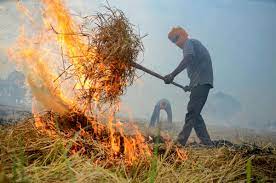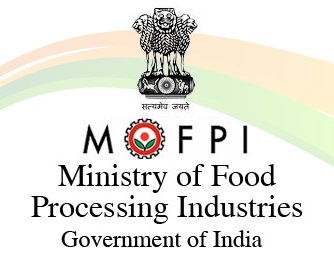In the recent CAQM review meeting, the State Government, along with relevant District Collectors, received directives to rigorously enforce the District Plans and State Action Plan. This emphasis particularly targets hotspot districts, with daily monitoring to eradicate stubble burning in Haryana.
Among Haryana’s 22 districts, 9 reported negligible or zero instances of farm fires in 2022. In 4 districts—Palwal, Panipat, Rohtak, and Sonipat—the number of farm fire incidents decreased to below 100 last year. The hotspot districts, with over 500 farm fire incidents, include Fatehabad, Kaithal, and Jind. Other districts of concern are Sirsa, Kurukshetra, Karnal, Ambala, Yamuna Nagar, and Hisar.
Envisioning drastic reduction of stubble burning incidents in Haryana through effective enforcement of the State Action Plan, the Commission for Air Quality Management in NCR & Adjoining Areas (CAQM), has recently taken stock of preparedness of the Haryana Government to bring down stubble burning cases drastically during the paddy harvesting season of current year.
During the meeting, State Government Secretaries In-charge of Departments concerned including Department of Agriculture and Department of Environment, Haryana State Pollution Control Board (HSPCB) and District Collectors (DCs) concerned assured the Commission to take all necessary steps, actions and measures in right earnest to effectively implement the State Action Plan to achieve drastic reduction in case of stubble burning during the current paddy harvesting season.
As per the State Action Plan, the total area under Paddy is estimated to be 14.82 Lakh hectares and a paddy straw generation of non-basmati paddy is expected to be more than 7.3 million tonnes.
Four (04) meetings have already been held by CAQM to finalize the action plan and review the preparedness and implementation of State and District Action Plans for the current paddy harvesting season. This year, CAQM has also sought the District-wise Action Plans along with the State Action Plan. CAQM has also issued Statutory Directions for strict implementation of Action Plan.
During the latest review meeting DCs of Districts concerned assured that mechanisms are in place towards management of straw in their respective districts through In-situ and Ex-situ management.
The status of availability of machinery was also deliberated upon, alongside the use of straw as fodder and management of straw through bio-decomposer application. Haryana is currently having more than 80,000 crop residue management machineries. The overall availability of machines and procurement of new machines were also reviewed. Optimal utilization of machines by mapping of demand and supply was reiterated in the review meeting.
Based on the satellite data for Kharif Season 2022, hot spot villages and Districts have been identified for the current year as part of micro planning based on active fire location (AFL):
|
Zone |
No. of Villages |
| Red (6 & above AFL) |
147 |
| Yellow (2-5 AFL) |
582 |
|
Green (0-1 AFL) |
6175 |
Most of the Red Zone Villages are located in the Districts of Fatehabad (49), Kaithal (36), Jind (24), Sirsa (11) and Karnal (10).
Various financial incentives and schemes are being implemented in the State of Haryana to achieve substantial reduction of paddy residue burning during the current harvesting season. They include:
Incentive @ Rs. 1000/ – per acre for in-situ / ex-situ management of paddy crop residue;
Incentive @ Rs. 7000/- per acre for diversification of paddy area with alternative crops under Mera Pani Meri Virasat scheme;
Incentive @ Rs. 4000/ – per acre for adoption of direct seeding of rice;
Grant of Rs. 1,00,000/- for achieving Zero Burning to Red Zone Panchayats;
Grant of Rs. 50,000/- for achieving Zero Burning to Yellow Zone Panchayats;
Transportation charges of Bales @ Rs 500/ – per acre limited to max of
Rs. 15,000/- to Gaushalas;
Special provisions of providing subsidy to the clusters identified for 2G ethanol plant;
Fixation of rates for procurement of paddy crop residue @ Rs. 2,500 per tonne.
State Government has also taken initiative to manage 5 lakh acre paddy area through Pusa Bio Decomposer and State Government will provide Pusa bio decomposer kits to the farmers, free of cost.
With the State Action Plan for the control on paddy stubble burning in place, Haryana is expected to witness drastic decline of the paddy stubble burning cases during this year. State Government representatives including Haryana State Pollution Control Board and DCs have assured that all preparations are in place to control the situation.
CAQM has repeatedly directed State Government officials including Deputy Commissioners and HSPCB to ensure effective and strict enforcement of the State Action Plan, especially in the districts where fire counts were comparatively high in the last year namely Fatehabad, Jind, Kaithal, Karnal, Kurukshetra and Sirsa.





